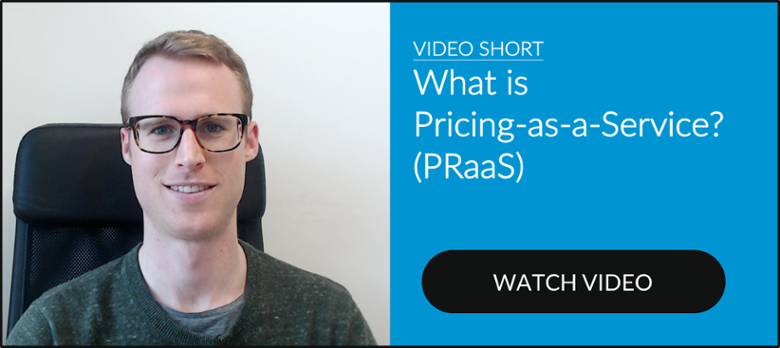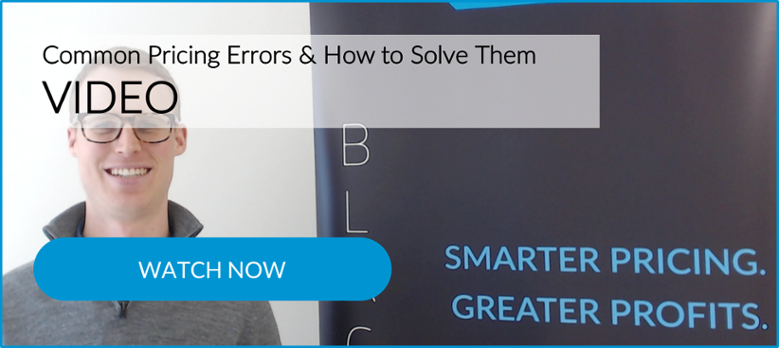
A journey of a thousand miles starts with just one step. We say that your first "baby" step on your pricing journey should be to decide on your pricing objectives. Pricing objectives give direction to the whole pricing process.
These goals that will guide you in setting the price of your product or service. When deciding on pricing objectives you must consider:
- The overall financial, marketing, and strategic objectives of your company
- The objectives of your product or brand
- Consumer price elasticity and price points
- The resources you have available
Each pricing objective requires a different price-setting strategy in order to successfully achieve your business goals. Some examples of what these objectives could be are given below. You just need to decide which pricing objective best suits your business need.
Current Profit Maximisation
A common goal for many businesses. Price has both direct and indirect effects on profit. The direct effect relates to whether the price covers the cost of producing the product.
Price affects profit indirectly by influencing how many units sell. The number of products sold also influences profit through economies of scale - the relative benefit of selling more units.
With this objective, all decisions with respect to new projects, acquisition of assets, raising capital, distributing dividends etc are studied for their impact on profits and profitability. It is important for companies with this objective to be confident they are achieving the best margin possible.
To achieve this, a combination of pricing strategies may be adopted and an appropriate pricing tool will be required in order to support the testing and analysis of each pricing decision; there must be a continual review of the success of each decision.
Current Revenue Maximisation
The objective is to maximise total sales. For example, a company may choose a loss leader pricing strategy by selling a product or service at break-even point below cost to stimulate other profitable sales. Sales-oriented pricing objectives seek to boost volume or market share.
A volume increase is measured against a company's own sales across specific time periods. A company's market share measures its sales against the sales of other companies in the industry. Volume and market share are independent of each other, as a change in one doesn't necessarily spur a change in the other.
Maximise Quantity
This objective seeks to maximise the number of units sold or the number of customers served in order to decrease long-term costs. For instance, time-based pricing utilises the power of technology to dynamically update prices based on a customer’s willingness to pay against market forces such as availability.
Maximise Profit Margin
Profit margins are the amounts companies make beyond what it costs to create goods or services such as costs of goods sold, production costs, inventory costs and similar expenses.
A high profit margin indicates high profitability for the business although what constitutes a good margin varies by industry. Many firms, in a desire to make themselves appear profitable in the long term, choose to focus intensely on maximising profit margins.
Quality Leadership
If a company chooses a quality leadership objective, it aims to provide the best quality product in the market, and therefore can typically charge more for their goods or services than competitors. These companies are usually market leaders. One of these pricing strategies could be value based pricing.
Survival
In situations of market decline or overcapacity, the aim may be to select a price that will cover all costs and permit your company to remain in the market. In this case, survival may take priority over profits, so must be considered only as a temporary objective.
One example would be absorption pricing, a method of pricing in which all costs are recovered. The price of the product includes the variable cost of each item plus a proportionate amount of the fixed costs.
Another example of this objective would be market-oriented pricing where analysis and research of the market are completed, and prices are set dependent on these results.
Also known as a competition-based strategy, market-oriented pricing compares similar products being offered in the marketplace. The seller then sets the price higher or lower than their competitors depending on how well their own product matches up.
Prices are flexible so a company can lower them in order to increase sales enough to keep the business afloat. Your company may use a survival-based price objective when it's willing to accept short-term losses for the sake of long-term viability.
Status Quo
This objective seeks to have stable prices in order to avoid price wars but to maintain a moderate, stable profit. Value-based pricing is one example of stable, status-quo pricing.
A status quo price objective is a tactical goal that encourages competition on factors other than price. It focuses on maintaining market share, for example, but not increasing it, or matching a competitor's price rather than beating it. Status quo pricing can have a stabilising effect on demand for a company's products.
Start on Your Journey
So, if you are starting out on your pricing journey may I suggest that you take the time to decide in the first instance just what your pricing objectives should be – and what is the most advantageous strategy to use to achieve your business goals in the current prevailing market conditions.
This is a very good place to start on your pricing journey and once you have these objectives worked out you will be a good few steps further along on the path to pricing success.
Related Posts
How to Price Your Product or Service
4 Common Pricing Strategy Misconceptions
What Pricing Approach Do I Need to Reach my Business Objective?
Sources
http://www.inc.com/guides/price-your-products.html
http://smallbusiness.chron.com/four-types-pricing-objectives-33873.html
http://www.briantracy.com/blog/general/7-principles-to-maximize-your-profits-in-any-market/
The Strategy and Tactics of Pricing, Tom Nagle and John Hogan, 2016.
Pricing with Confidence: 10 Ways to Stop Leaving Money on the Table, Reed K. Holden and Mark Burton, 2014.
Pricing Strategy: Tactics and Strategies for Pricing with Confidence, Warren D. Hamilton, 2014.
Pricing for Profit: How to Develop a Powerful Pricing Strategy for Your Business, Peter Hill, 2013.
Pricing Strategy: How to Price a Product, Bill McFarlane, 2012.




